My interest in camouflage began after getting gut shot from 20 feet away during a paintball game by a guy I had no idea was there.
Despite literally being right in front of me, I’d never even seen him. It was then that I realized the importance of proper camo.
Unfortunately, it often gets confusing when you realize just how many versions of camo are out there. If you’re shopping around for the best camo to help you on your next turkey hunt or just to play airsoft, you want to know you’ve invested your money wisely.
Today, I want to focus on some of the major players you’ll likely want to know about. These are a collection of the best of the best and the ones you’ll see everywhere.
Table of Contents
Loading…
Best Camo Patterns
1. Universal Camouflage Pattern (UCP)
Before you ever set foot into a military surplus store or click ‘checkout’ online, you need to know what UCP is
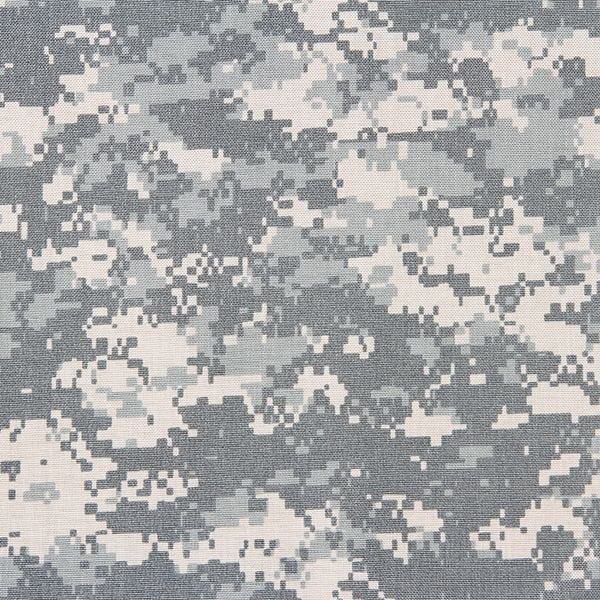
That way, you can avoid it.
This pattern was one of the worst camo designs the modern world has ever seen. Soldiers hated it, and many even viewed it as dangerous. It’s not hard to see why…
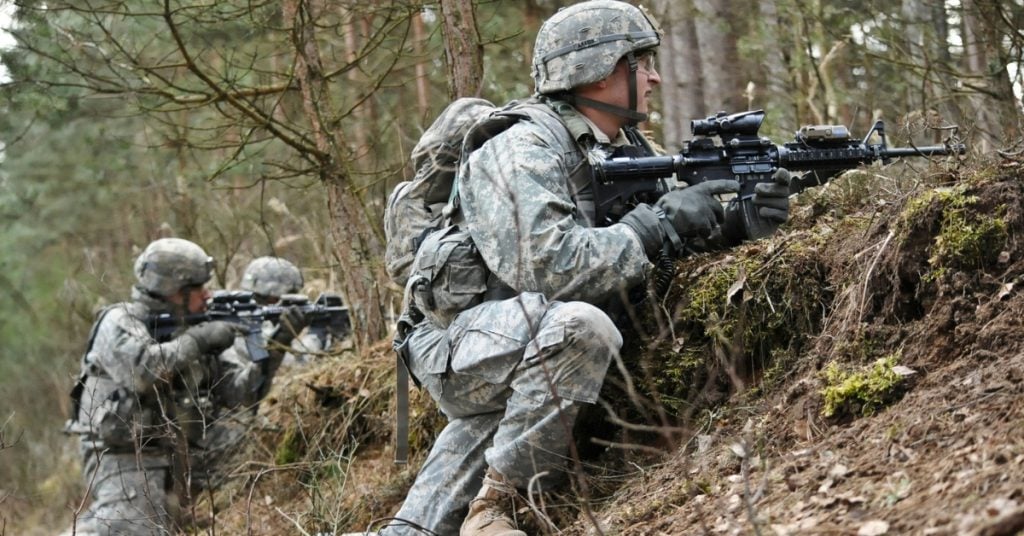
So, if you come across UCP while you’re out and about, avoid it at all costs. It will not do what you want it to do.
2. MultiCam
Developed in 2003 by Crye Precision, this is one of the newer camo patterns the US military uses.
Based on the Scorpion pattern, this was issued to soldiers in Afghanistan to great effect after it was found that using the Universal Camouflage Pattern (UCP) didn’t really work.
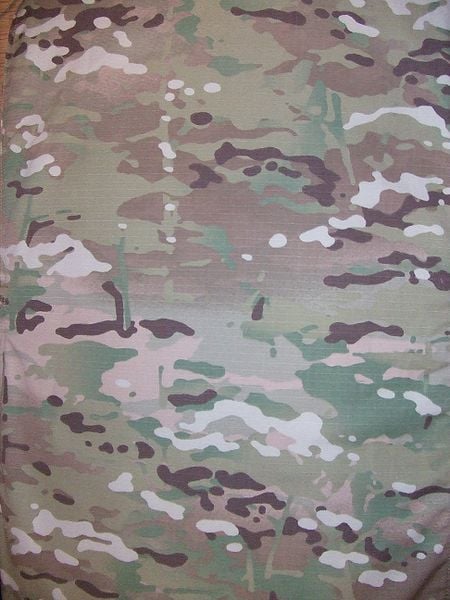
In contrast, MultiCam was designed to blend in well with virtually any environment (except for snow) regardless of terrain, lighting, or weather conditions.
The patterning causes you to see the colors that are most prevalent in your environment, and your brain “fills in the gaps” when looking at MultiCam.
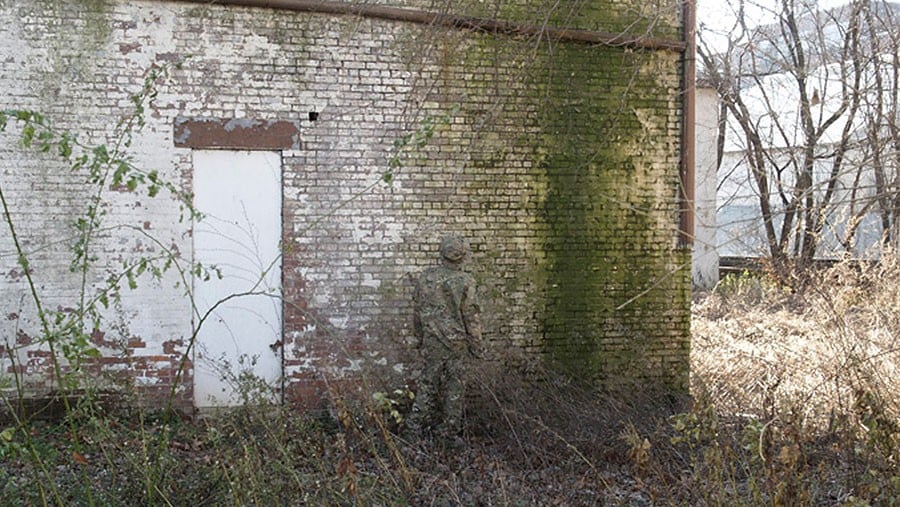
As a result of this reliance on a blending effect rather than the traditional contrast effect of camouflage, MultiCam even works at close range as well.
If you’re looking for a one-size-fits-all option, MultiCam is it.
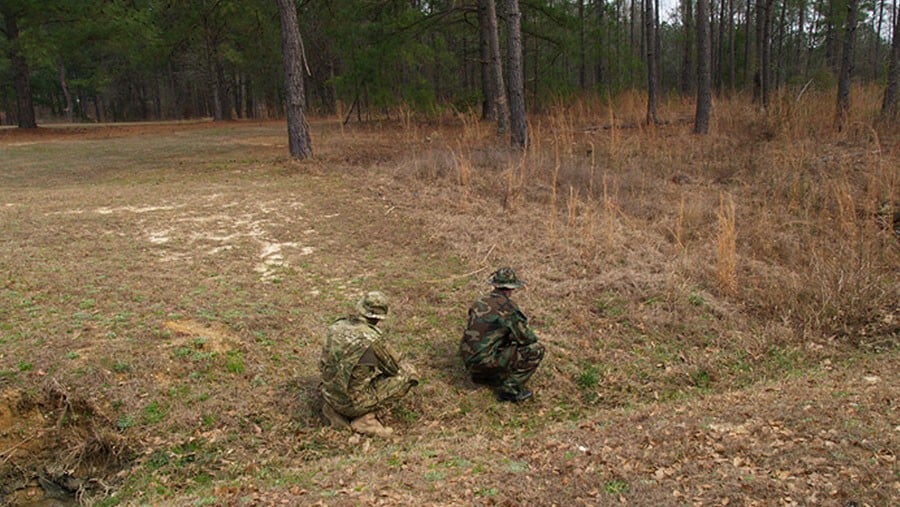
3. MARPAT
Short for “Marine Pattern,” this was the first digital camo pattern adopted in 2001 by the US Marine Corps.
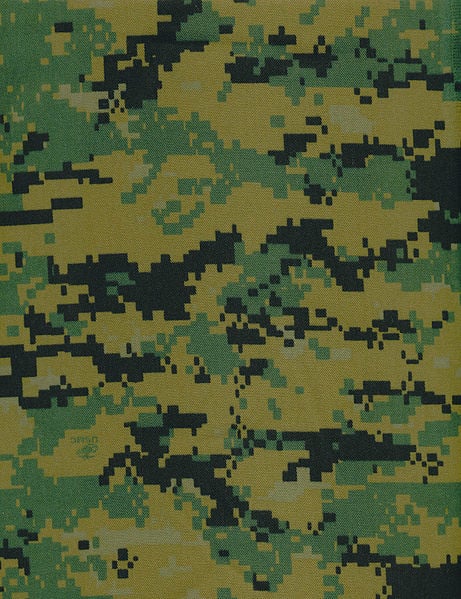
There’s definitely a heavy influence here from the Canadian CADPAT pattern. It’s an awesome camouflage pattern that has spawned a host of other pixelated camo patterns on the market.
And while it’s technically not for sale on the civilian market, there are some alternatives out there that I personally enjoy a whole lot more.
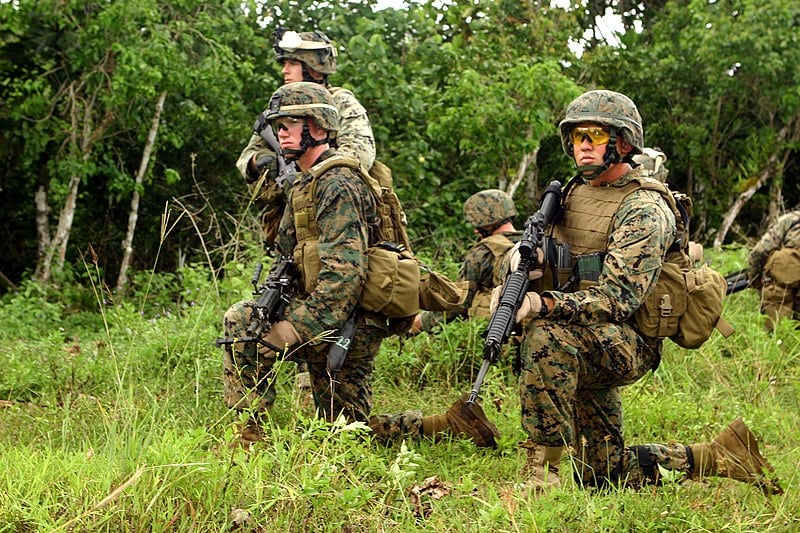
4. A-TACs
This is the civvy version of MARPAT and is one of the best patterns out there, in my opinion. It’s a pixelated camo in which the individual pixels are further grouped into blob-like shapes.
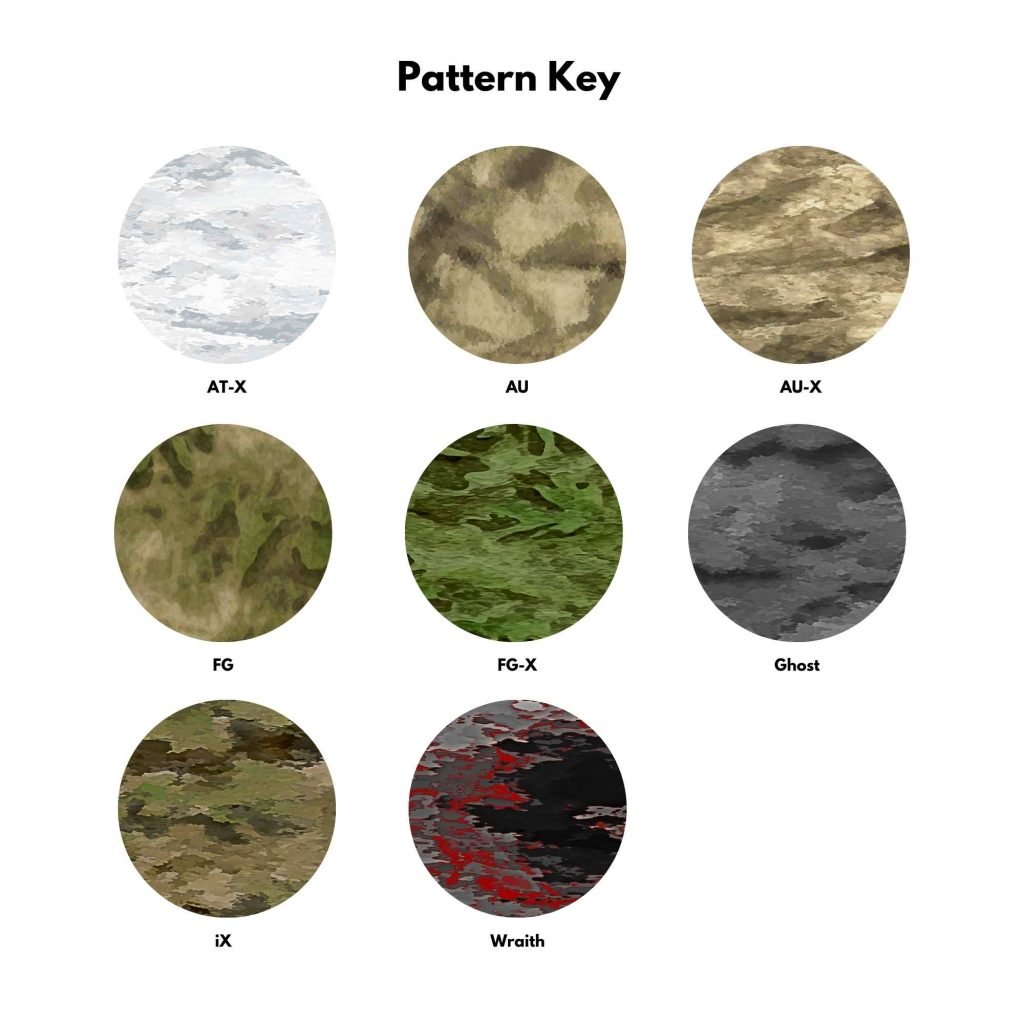
The pixels themselves aren’t little squares, either. They’re an ‘organic’ shaped pixel, meaning the lines are less sharp.
Unfortunately, I’ve found this is a more difficult pattern to find out there. Military1st carries it (albeit at a hefty price tag), and CombatSportSupply has a more wallet-friendly version.
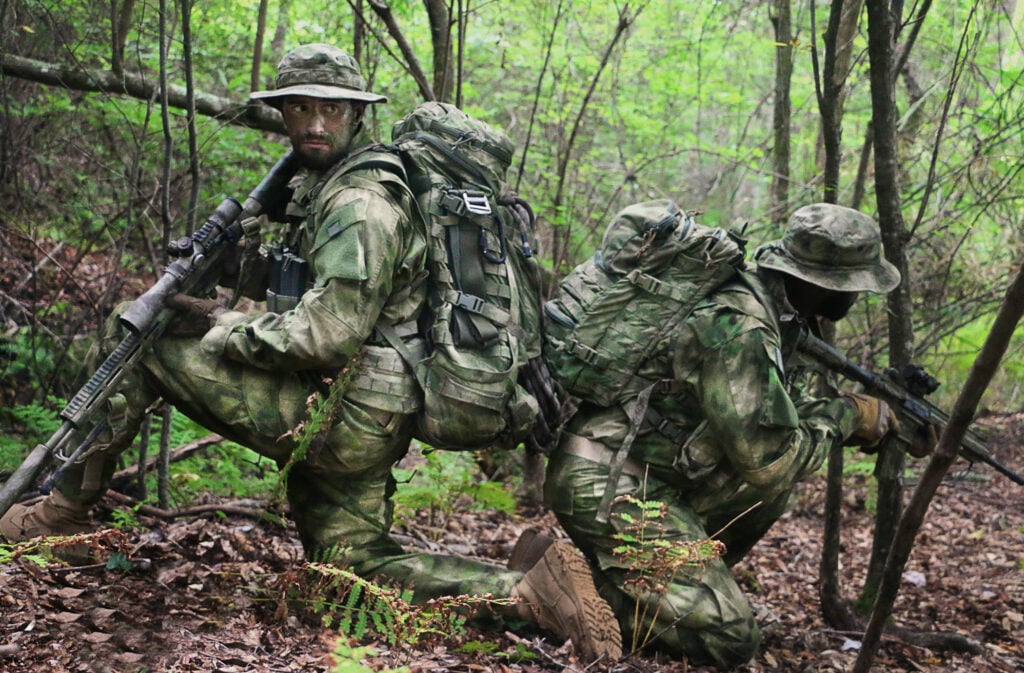
I confess I love this camo pattern. It straight-up works. Need proof? Check out the video below.
5. Mossy Oak Obsession
Once you start getting into hunting brands rather than military camo patterns, you begin to find camo with more lifelike characteristics.
Tree bark, sticks, and actual leaves are all parts of such designs. These are fantastic for the seasons and areas for which they’re designed, and one of the best is Mossy Oak Obsession.
This is the official patterning of the National Wild Turkey Federation and serves as a great camo pattern for early spring when there’s plenty of green out there.
According to Mossy Oak, this is “the most popular and proven lethal pattern to ever hit the spring woods.”
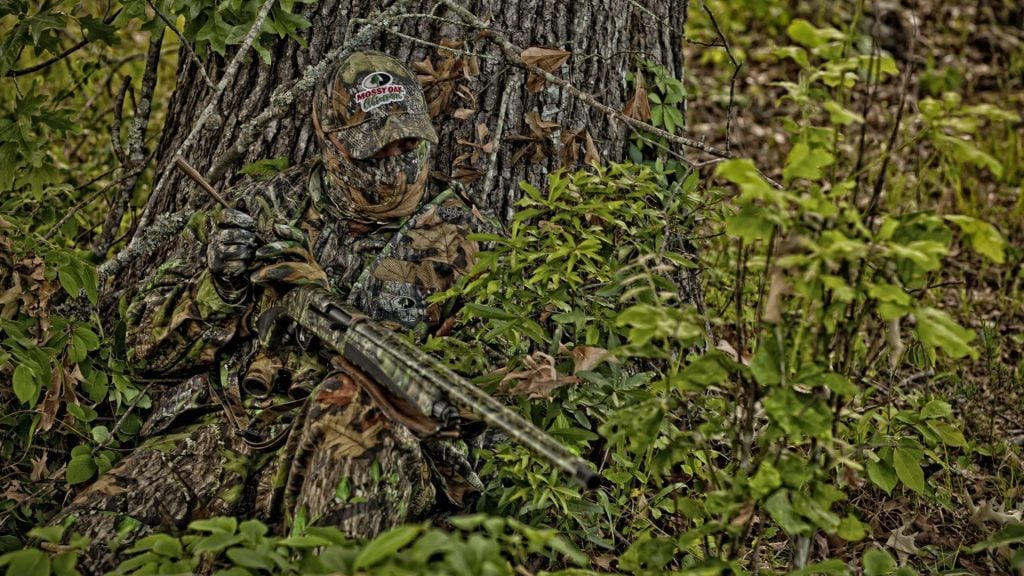
The only negative with Mossy Oak Obsession is that it’s seasonal. If you wear it at the wrong time of the year, your ability to blend into the background is going to be hampered.
6. Flektarn
German for “spot camouflage,” this design took Europe by storm.
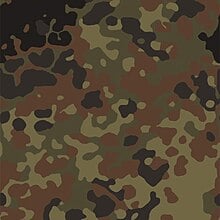
Belgium, Denmark, Poland, and even China caught on to this design and used it as a source of inspiration in their own camo patterns. It’s a great camo pattern that I really like, and multiple versions are available out there.
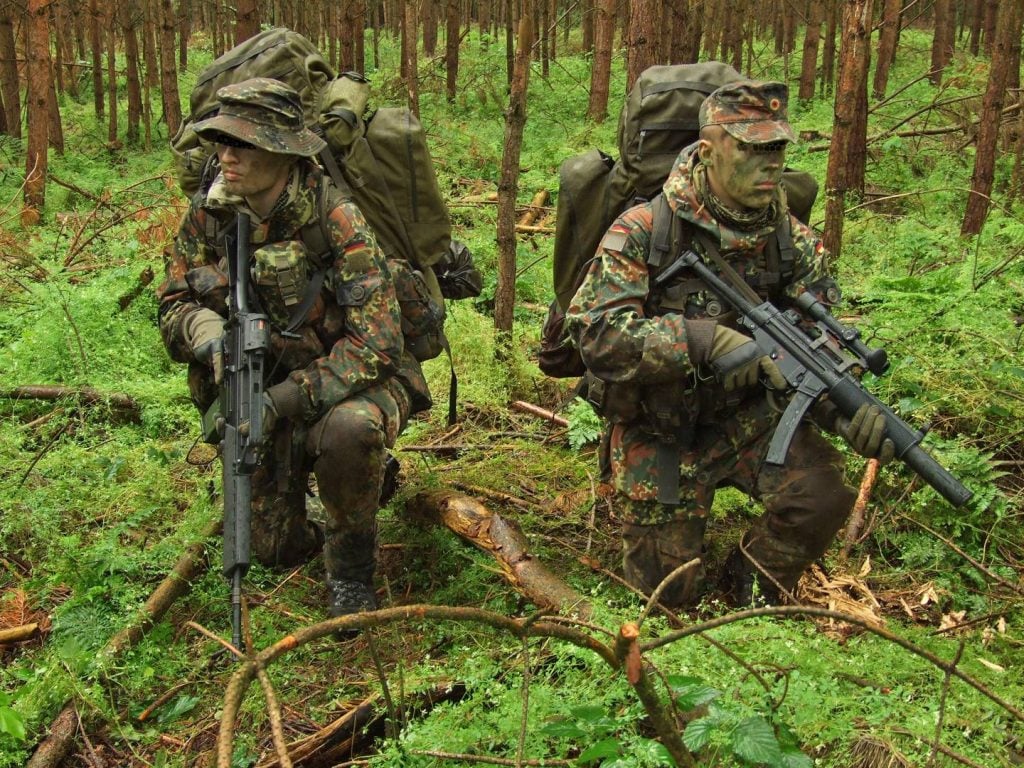
It performs very well in dense forests (Southern pines come to mind), but I’m personally a fan of Flektarn that has bright green spots in it for areas with a lot of vibrant vegetation.
7. US Woodland
From 1981 to 2006, this was the camo pattern used by the majority of the US military, and it’s still an incredibly popular pattern worldwide.
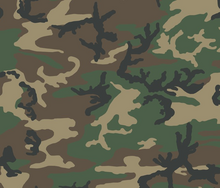
This is the pattern that comes to mind for many people when they think of the word ‘camouflage.’ It’s also known as M81 and is simply a 60% enlargement of a prior military camo known as ERDL.
While this is cheap and abundant, it tends to “blob up” when it’s not viewed at the correct distance. In other words, if you’re too close or far away, somebody will likely see you.
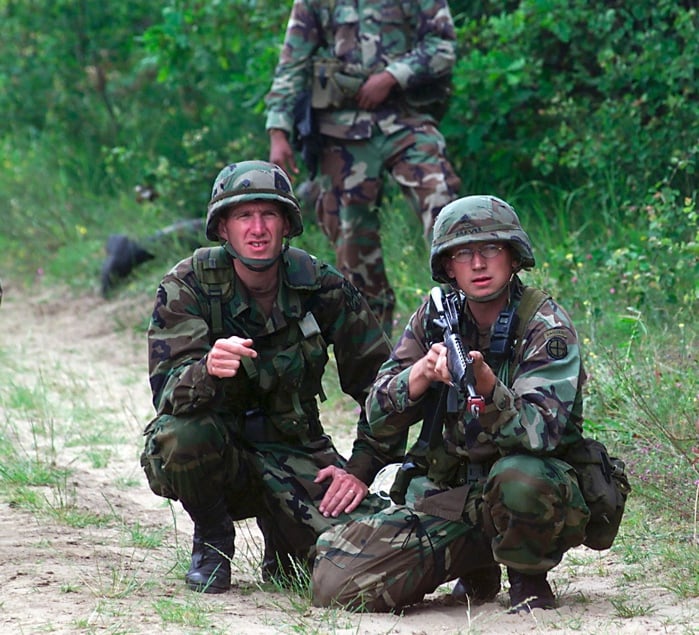
8. Realtree EDGE
Another “hunter’s” camouflage, this is a fantastic and versatile pattern.
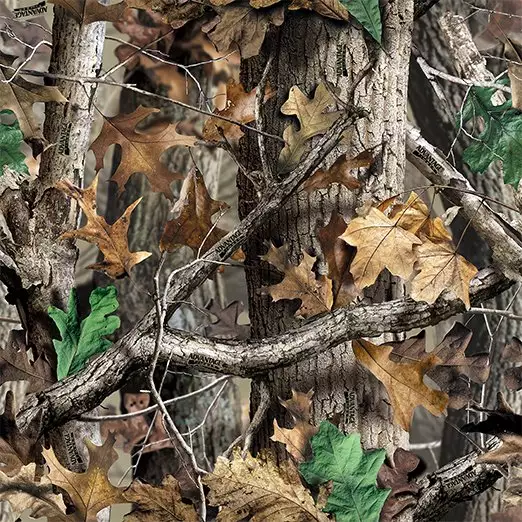
EDGE is the most popular and widely available pattern from Realtree and is specifically designed to help break up the human shape at both close and long-range distances.
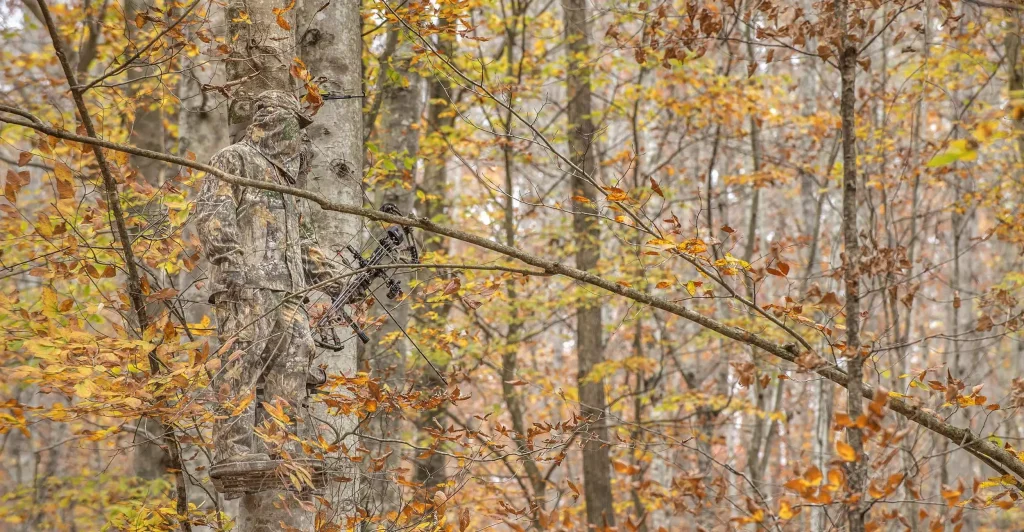
Realtree also manufactures various other patterns for specific environments and hunting scenarios, and all of them offer an exceedingly high level of camouflage to avoid being spotted by game.
9. Chocolate Chip
Also known as Six Color Desert, you’ll often see this patterning at military surplus stores. It became popular during the First Gulf War and was specifically created with desert environments in mind.
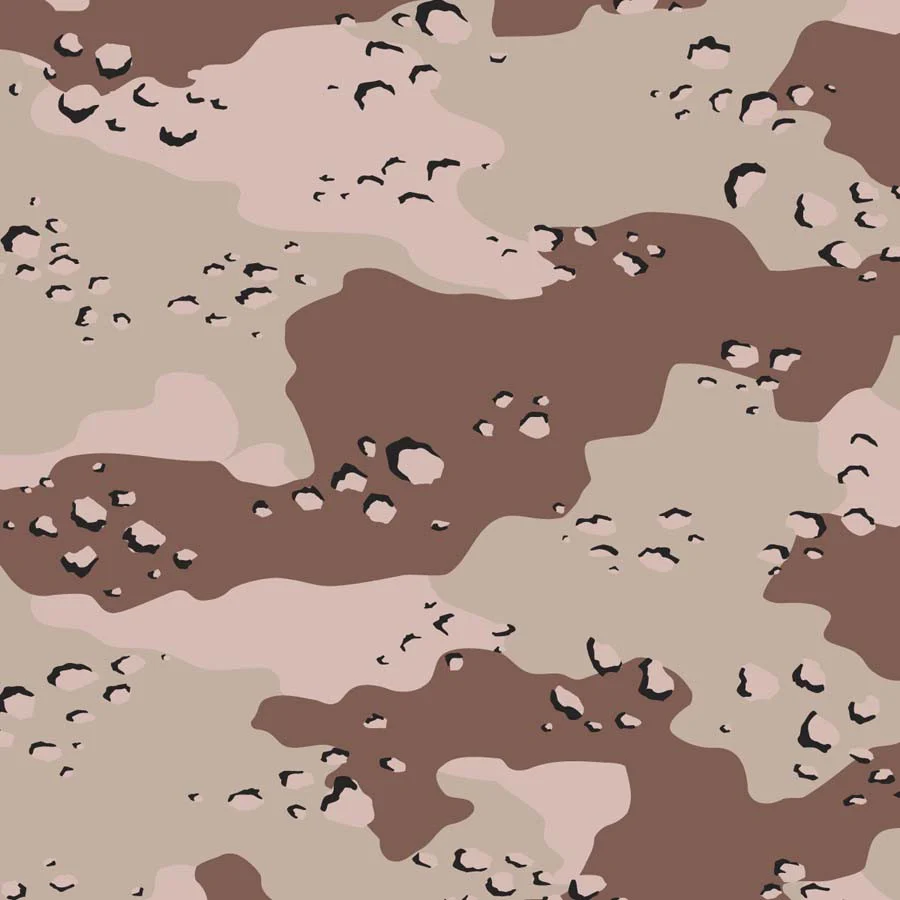
The little ‘chocolate chips’ are supposed to look like rocks from a distance.
However, this really wasn’t a great camo pattern. It was designed to fit in well with the arid parts of California, but it doesn’t do so in the Middle East.
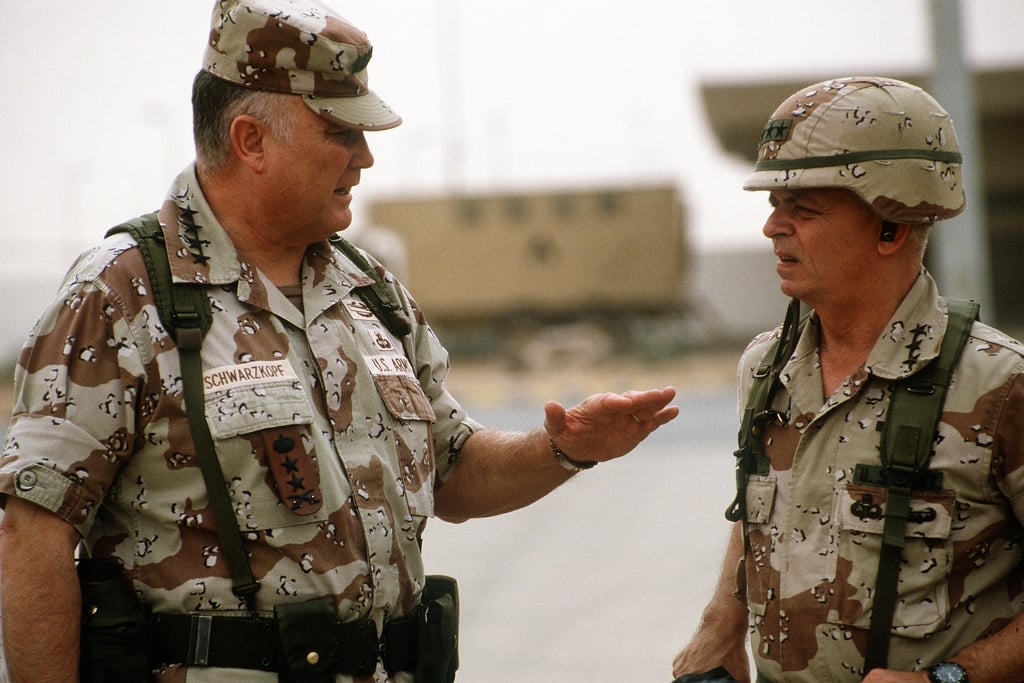
Regardless of effectiveness, this patterning grew immensely popular, with Libya, Argentina, China, El Salvador, Egypt, Iran, and many other nations adopting similar patterning.
Final Thoughts
As mentioned above, there are literally thousands of camo patterns on the market. And while some performed fairly well, many failed the test of time.
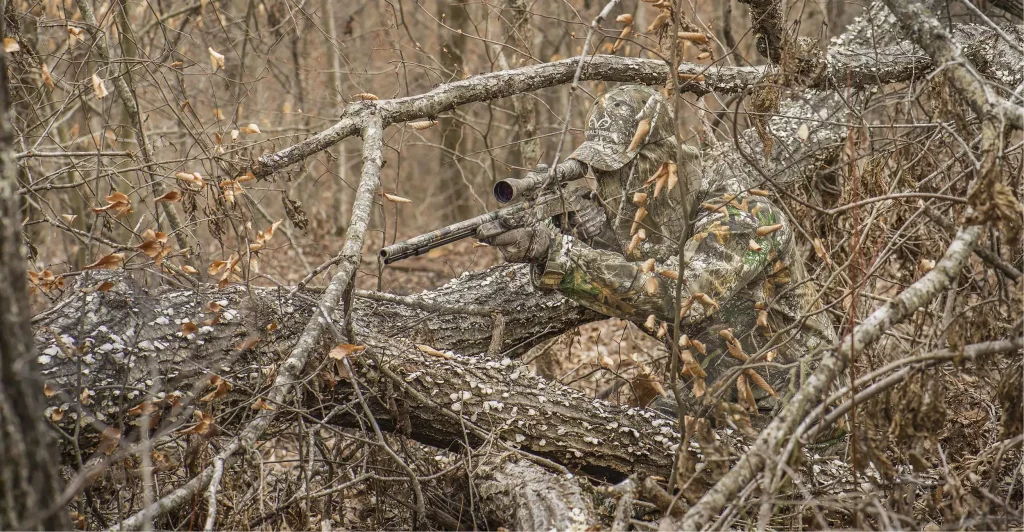
Before you go out and buy your camouflage, I highly recommend you look at the environment in which you reside. The Texan doing a lot of deer hunting will need something drastically different from the Georgian who enjoys playing Airsoft in the nearby mountains.
Do your research, find what’s in your budget, and check out some of the designs listed above.
Are there other camo patterns out there you highly recommend or that we missed? Let us know in the comments below! Camo is just one piece of your kit, so be sure to check out our article on the Must-Have Hunting Gear for New Hunters!

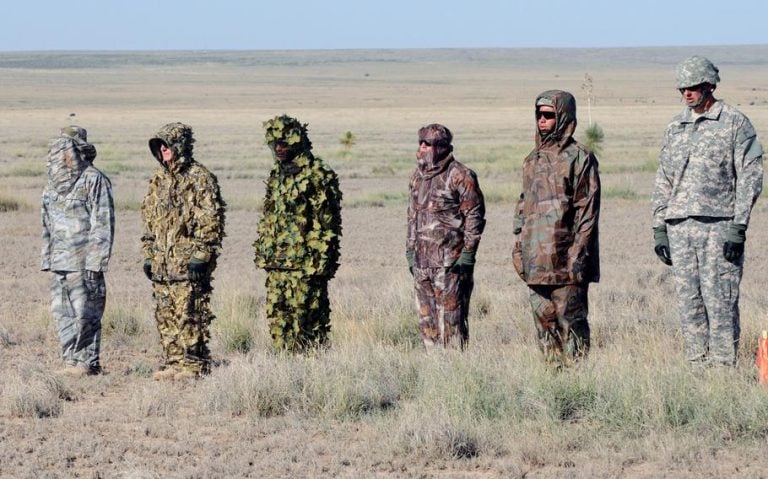
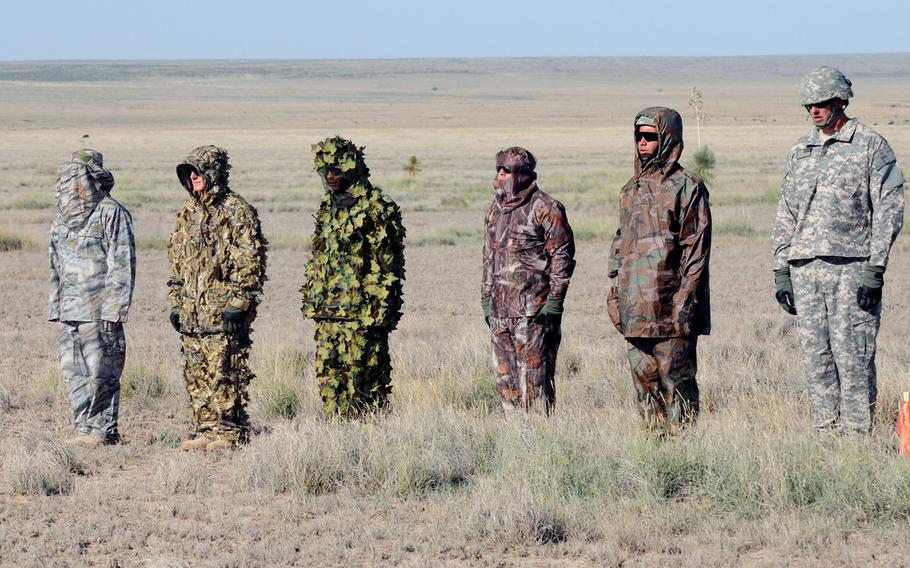
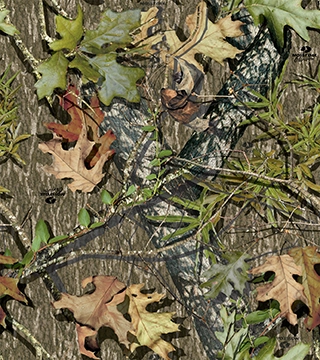







8 Leave a Reply
Great article on camo patterns! It’s eye-opening how much thought goes into selecting the right one for different environments. If you’re looking to upgrade your gear with stylish camo hoodies, jackets, or accessories, be sure to check out Camo Colors Website . They offer a great variety of custom-colored camo clothing that blends function with style! Perfect for your next hunting trip or outdoor adventure.
I've discovered the company who markets Veil is now tailoring it with specific patterns for exclusive sale by individual retailers. Academy has there's, Scheel's gets a slightly different one. A lot of hunters are moving away from pretendatreeflage, and this opens up variants to suit their environment better. The major Brands are responding with less leaves and moving toward the same dispersion of colors. I finally have two major items to wear in one pattern with all this, which sounds like a good idea. Still, plenty of military units do not - the Brits SAS are known to wear their famous camo field parka, with solid pants. Since they are lying down or dug in when viewed, the pants aren't as visible and they seem to get away with it.
The old pattern of red and black wool coat with dark grey pants wasn't readily noticeable in the woods by deer back then, either. There is some sense to it. We may be convincing ourselves of camo's invincibility more that it deserves.
i don't think ucp is useless if you redye it. I buy a lot of ucp and redye it with apple green rit dye.
Phantomleaf,
you should know about phantomleaf. It is by far my new favorite and it is extremely effective. But, There are also so many good patterns out there... Pencott, concamo, asio(owl camo), the new kryptek obskura line to name a few
Don't forget the Rhodesian Camo. Still a great camp for woodlands of many different types
Good review.
The fun part about the DOD adopting "multicam" is they didn't. That copyrighted design was already on the market and it was going to take buying out the maker completely to have the rights to use it - they wanted it exclusively. $40 million was too steep, so they compromised and took the version submitted early on, Scorpion, which lacks black.
I hear in the services wearing it nobody pays much attention to which it is. Fun fact, early on you could get Multicam garments in BDU's and the M65 Field Jacket, which I wore for years deer hunting in MO. Still do. Works well as camo.
One new variety of camo is the one I call Explosive Diarrhea, it's a blotchy blob pattern marketed as Veil and other closely related versions. They mix well except for one major flaw - no retailer sells pants in a heavy brush buster fabric. It's all lighter than parachute nylon and nearly worthless. I have considered getting some khaki BDU pants and using a bag cake icer with dye and a hammer . . .
A top contender to replace UCP was Kryptek. Cheaper than Multicam I've seen demonstrations that show it works quite well. When they didn't get the government contract they focused on hunting and now have a variety of color schemes available.
You left out the Air Force Operational Camouflage Pattern (OCP) utility uniform (AKA BDU) pattern.